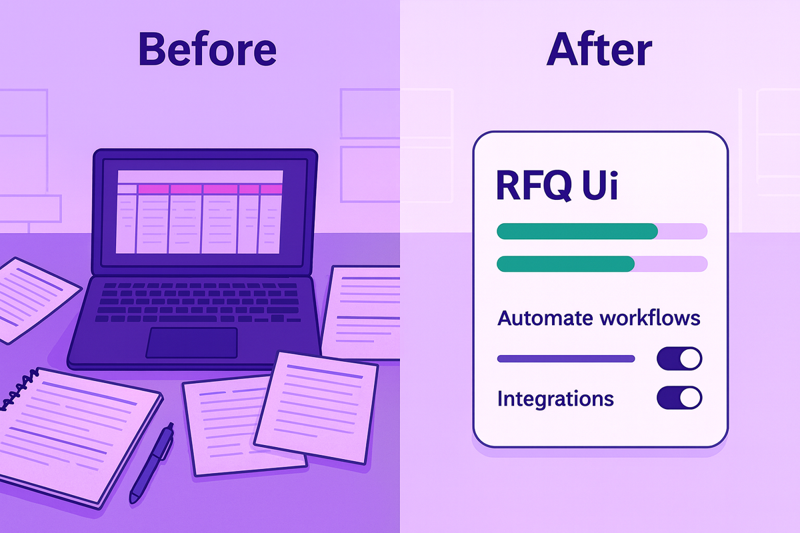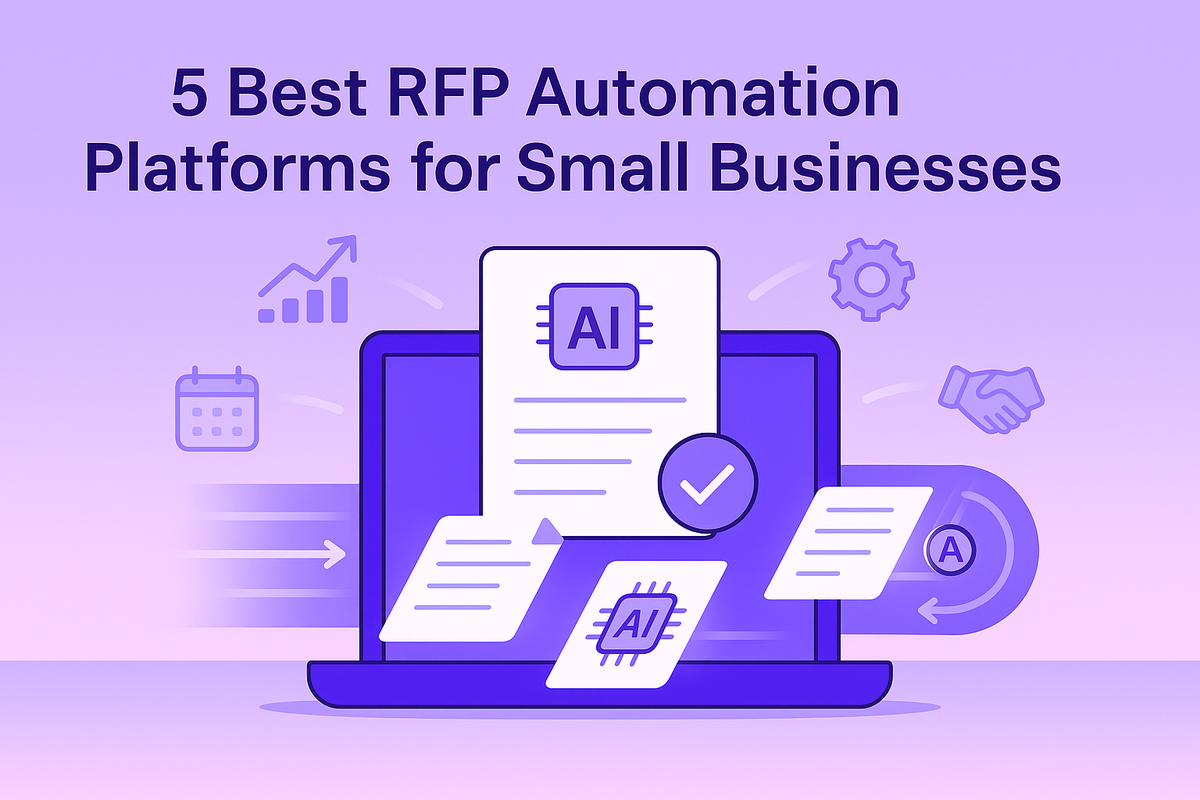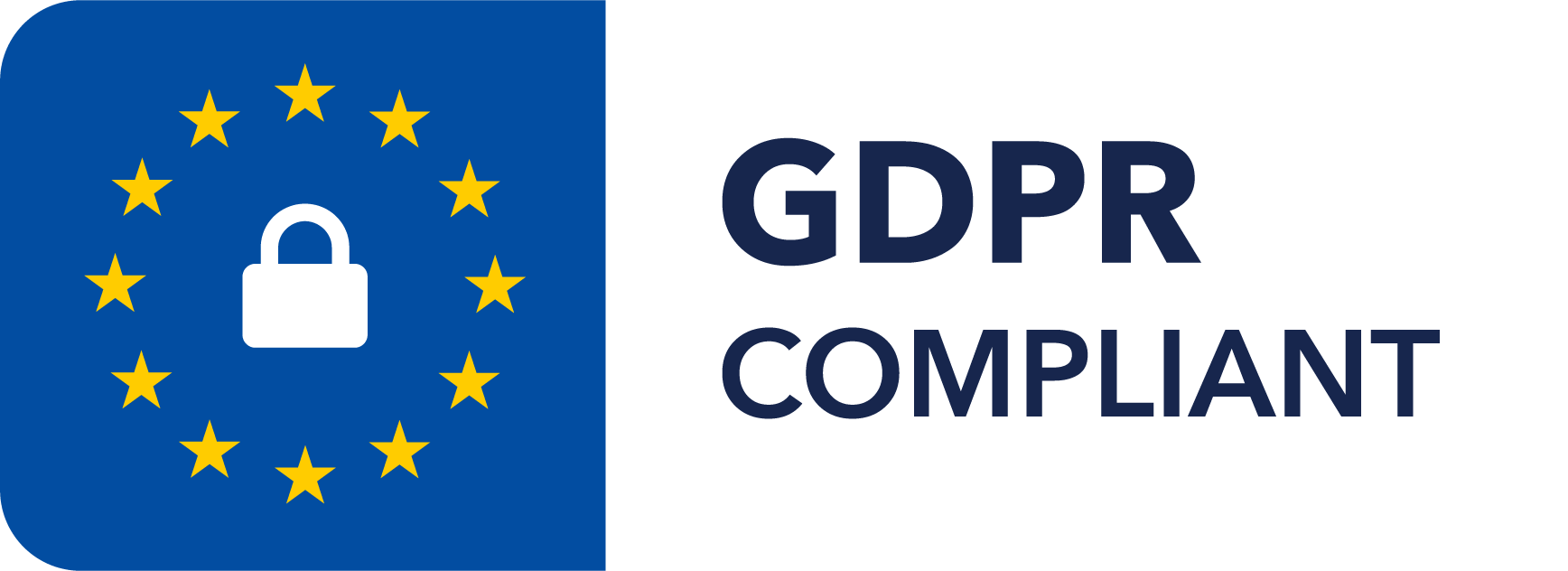How to Automate RFQ Process: The Ultimate Guide
August 14, 2025
By
Evie Secilmis

Streamlining Your RFQ Process with Automation
In today’s competitive procurement landscape, efficiency and precision are everything. One of the most effective ways to achieve both is by automating your Request for Quotation (RFQ) process.
Automation transforms how businesses create, distribute, evaluate, and award RFQs, helping teams reduce manual work, eliminate errors, and improve supplier collaboration — all while cutting costs and accelerating decision-making.
Before exploring automation, let’s review what the RFQ process actually involves and why it’s a vital part of procurement.
What Is an RFQ?
A Request for Quotation (RFQ) is a document businesses send to suppliers requesting detailed pricing and terms for specific goods or services. It’s a core component of the procurement process, enabling organizations to gather competitive bids and select the best supplier based on price, quality, and delivery.
Without a well-defined RFQ process, companies risk overspending or facing supply chain disruptions due to inconsistent supplier performance.
For a deeper overview, read What Is a Request for Quotation (RFQ)?.
The Traditional RFQ Process
A structured RFQ workflow typically includes five stages:
- Preparation: Define the goods or services needed, set delivery timelines, and collaborate across departments to finalize specifications.
- Supplier Identification: Research and shortlist vendors based on capacity, reliability, and past performance.
- RFQ Creation: Draft and distribute a detailed RFQ outlining requirements, deadlines, and terms.
- Bid Evaluation: Collect and compare supplier quotes — not just by price, but by quality, delivery speed, and post-sale support.
- Supplier Selection: Choose the vendor offering the best overall value and potential for long-term partnership.
While this approach works, it’s manual, repetitive, and time-intensive. That’s where RFQ automation software makes a difference.
How RFQ Automation Transforms Procurement
By leveraging procurement automation, businesses can digitize every step of the RFQ process — improving accuracy, transparency, and speed.
1. Faster Turnaround Times
Automated platforms can generate, send, and track RFQs in minutes. This drastically reduces administrative workloads and allows procurement teams to focus on strategic sourcing and relationship building.
2. Greater Accuracy and Consistency
Automation ensures that data — from pricing fields to supplier details — remains consistent across documents, reducing costly human errors and duplicate entries.
3. Smarter Supplier Management
RFQ automation tools often include built-in supplier management features that allow teams to:
- Maintain up-to-date supplier records
- Track vendor performance
- Automate qualification workflows
- Benchmark reliability and compliance
Explore how automation impacts broader procurement processes in What Is Procurement Automation (and Why It’s the Future of Vendor Management).
4. Automated Bid Evaluation
Instead of manually comparing spreadsheets, automation enables quick side-by-side quote comparisons, highlighting the most cost-effective and compliant options instantly.
5. Cost Savings and Efficiency
Reducing manual input and cycle time leads directly to lower operational costs. Automation can also reveal hidden savings opportunities by analyzing supplier trends and contract terms.
6. Better Reporting and Insights
RFQ automation tools provide analytics dashboards that track:
- Average quote turnaround time
- Supplier response rates
- Cost variances
- Spend distribution
These insights allow teams to make smarter, data-driven procurement decisions.
Implementing RFQ Automation: A Step-by-Step Guide
Transitioning from manual workflows to automation is easier than it sounds — especially with the right software and strategy.
1. Assess Your Current Process
Identify bottlenecks, error-prone steps, and repetitive tasks. This assessment helps define where automation will deliver the highest ROI.
2. Choose the Right Software
Select an RFQ automation platform that offers:
- Customizable RFQ templates
- Supplier management tools
- Automated bid comparison
- Integration with existing ERP or procurement systems
Popular options include SAP Ariba, Coupa, and Procurify, though many teams prefer AI-driven solutions like Iris for end-to-end RFP and RFQ automation.
3. Train and Onboard Your Team
Provide hands-on training and create documentation for consistent usage. Encourage feedback during rollout to refine workflows quickly.
4. Monitor and Optimize
Use performance data to continuously improve efficiency and compliance. Track metrics like cycle time, accuracy rate, and supplier response rate to measure impact.
Challenges and Considerations
While RFQ automation offers clear benefits, a few considerations ensure success:
- Initial Investment: Upfront software and training costs are typically offset by long-term efficiency gains.
- Change Management: Team buy-in is essential. Communicate benefits early and provide continuous support during adoption.
- Data Security: Choose tools with encryption, access control, and regular audits to protect sensitive supplier data.
For more on secure procurement workflows, read What Is Security Questionnaire Automation (and Why It Matters).
Real-World Results
- A manufacturing firm reduced RFQ cycle time by 50% and cut procurement costs by 30% within six months of implementing automation.
- A retail company improved supplier communication and accuracy through automated quote comparisons, achieving faster turnaround times and stronger vendor relationships.
The Future of RFQ Automation
As AI continues to reshape procurement, machine learning and predictive analytics are being integrated into RFQ automation to forecast pricing trends and evaluate supplier risk.
When connected with RFP and DDQ automation, businesses gain a unified platform that covers every step of vendor management — from initial quote to contract renewal.
To explore related tools, see:
- What Is Proposal Automation (and Why It Matters)
- AI Procurement Software: How It’s Transforming Vendor Selection
Key Takeaways
- Automating the RFQ process accelerates procurement, reduces errors, and lowers costs.
- Built-in analytics and supplier tracking improve sourcing decisions.
- RFQ automation connects seamlessly with broader procurement and compliance workflows.
- The future of procurement lies in connected, AI-driven automation systems.
Share this post
Link copied!




















